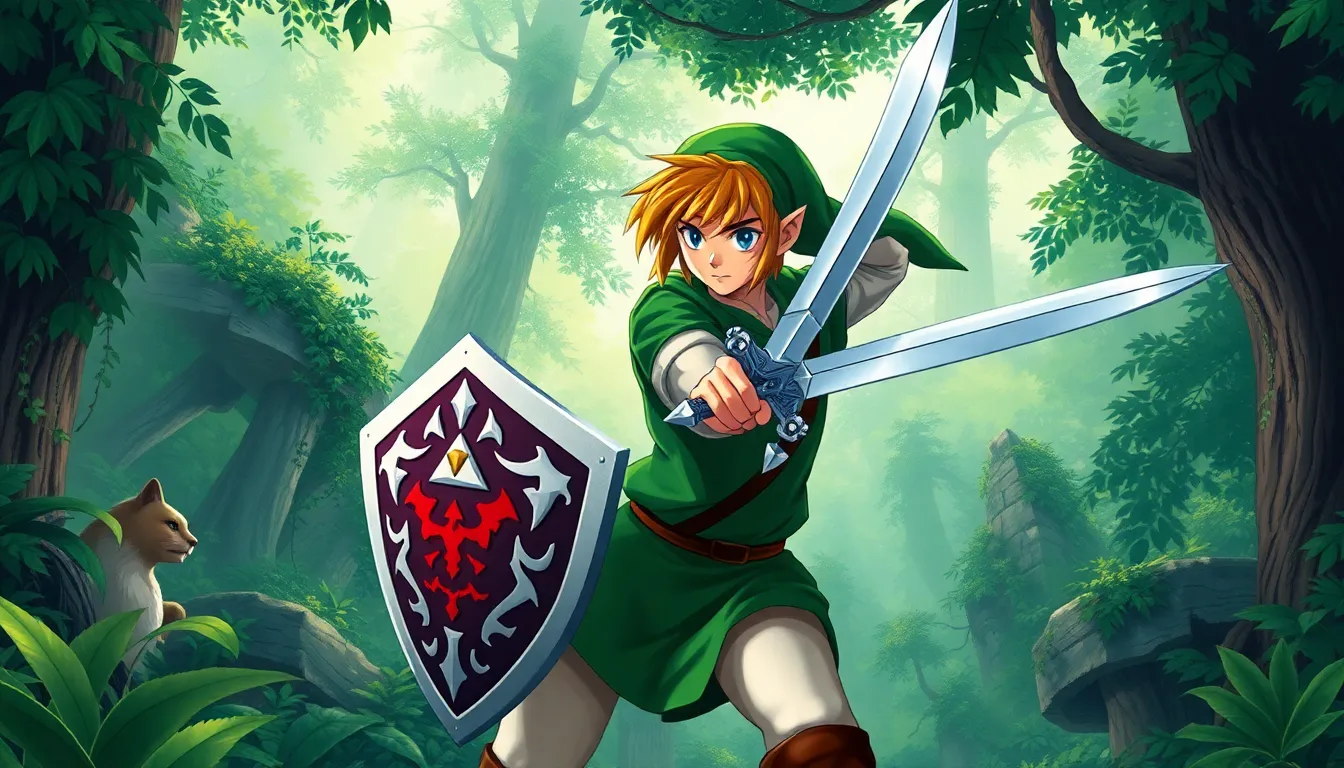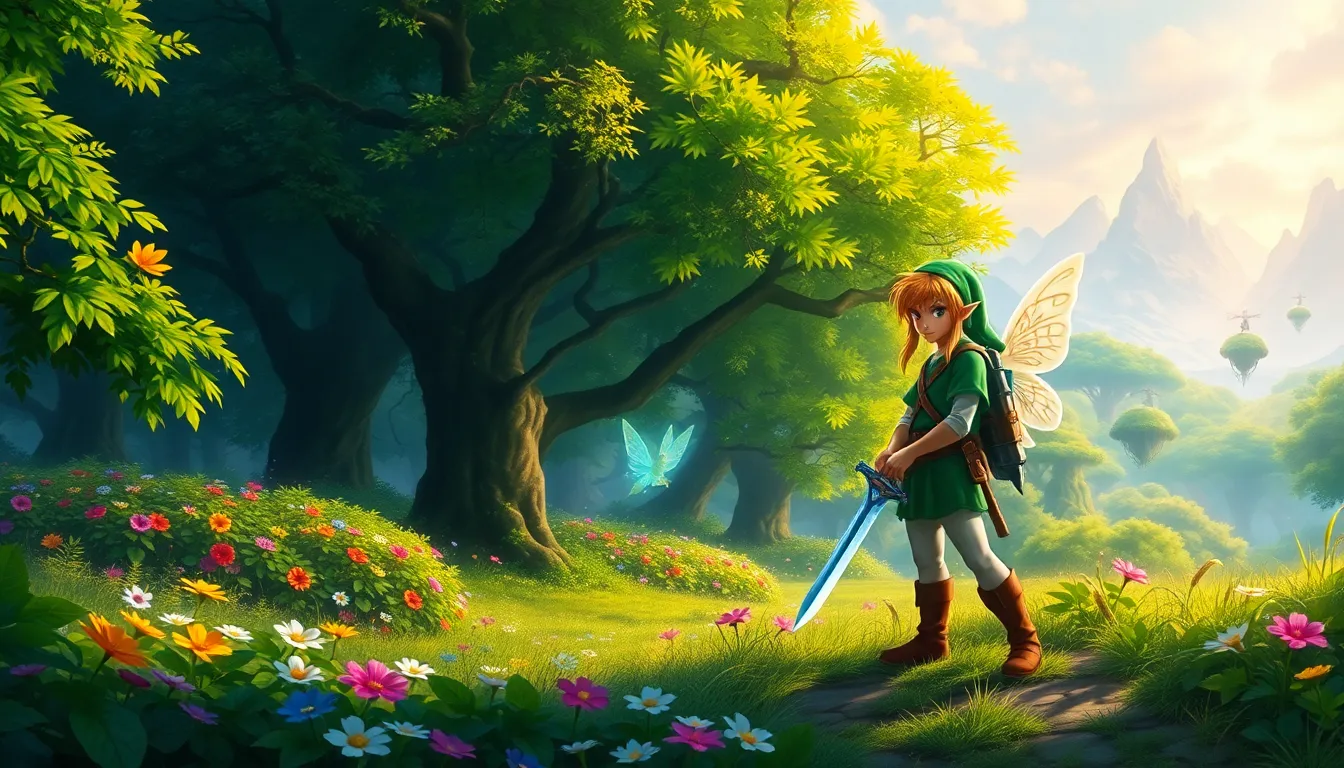In a world where time travel is as simple as playing a catchy tune, The Legend of Zelda: Ocarina of Time stands out as a timeless classic. Released in 1998, this game catapulted players into the enchanting land of Hyrule, where they’d wield a sword, solve puzzles, and battle sinister forces—all while befriending a fairy who’s just a tad too chatty.
With its captivating storyline and innovative gameplay, it’s no wonder players still find themselves humming those iconic melodies. Whether you’re a seasoned adventurer or a newcomer ready to dive into the world of Link, this game offers a magical experience that’s hard to resist. So grab your ocarina and prepare for an epic journey that’s sure to leave you chuckling at the absurdity of battling giant spiders while saving princesses.
Table of Contents
ToggleOverview of Zelda Ocarina of Time
“The Legend of Zelda: Ocarina of Time” revolutionized the action-adventure genre upon its release in 1998. This game invites players into the expansive world of Hyrule, where Link embarks on a quest to thwart the evil plans of Ganondorf. Engaging in swordplay, players solve intricate puzzles that unlock new areas and abilities.
Explorations through forests, dungeons, and towns showcase rich environments. Unique characters populate Hyrule, each contributing to the story’s depth and offering quests. The game’s memorable soundtrack, particularly its ocarina melodies, enhances the emotional storytelling.
Combat involves strategic choices, combining puzzle-solving skills with reflexes to defeat enemies. Link’s ability to switch between various weapons and items adds layers of strategy to the gameplay. Introducing the mechanic of time travel allows players to navigate two eras, creating a complex narrative structure.
Visuals utilize 3D graphics that were groundbreaking for the time. The immersive landscapes and character designs remain iconic within the gaming community. Legacy impacts include influencing many subsequent games, and it’s often regarded as one of the greatest video games of all time.
Awards for innovation and gameplay mechanics reaffirm its significance in video game history. Ongoing fan engagement through speedrunning and modding communities further solidifies its cultural impact. This enduring popularity demonstrates that “Ocarina of Time” holds a special place in the hearts of gamers across generations.
Gameplay Mechanics

Gameplay mechanics in “The Legend of Zelda: Ocarina of Time” play a crucial role in the player experience. They encompass exploration, puzzle-solving, and combat, creating an engaging and dynamic adventure.
Exploration and Puzzle Solving
Exploration drives the action in “Ocarina of Time.” Players navigate vast environments, including lush forests, intricate dungeons, and vibrant towns. Each area contains hidden secrets, requiring thorough investigation and interaction with characters. Puzzle-solving further enhances gameplay. Players encounter various challenges, such as manipulating objects and deciphering clues. Integration of items like the ocarina allows for unique solutions. Mastering time travel adds complexity, as players switch between the child and adult Link, unlocking new areas and experiences.
Combat System
Combat mechanics are central to the game’s strategy. Players engage in real-time battles against diverse enemies with unique attack patterns. Link can switch between weapons such as swords, shields, and ranged items, catering to different combat styles. The targeting system introduces precision, allowing players to focus on specific foes or weak points. Variety in enemy encounters necessitates adapting tactics, enhancing game depth and challenge. Players must balance aggression with defense to prevail, making combat both strategic and thrilling.
Storyline and Characters
The storyline of “The Legend of Zelda: Ocarina of Time” revolves around Link’s epic quest to save Hyrule from the dark power of Ganondorf. Players witness Link’s development from a young boy into a heroic figure.
Link and His Journey
Link, the protagonist, embarks on a compelling adventure filled with challenges. Starting as a child in Kokiri Forest, he soon discovers his destiny as the Hero of Time. This sacred role requires him to obtain the Spiritual Stones and the Master Sword to confront Ganondorf. Along the way, Link faces complex puzzles and fears, including emotional heartache after witnessing the impact of his actions across timelines. His dedication and bravery define his character and resonate with players throughout the game.
Key Supporting Characters
Several characters enhance the narrative depth in “Ocarina of Time.” Princess Zelda plays a crucial role in the battle against Ganondorf, often guiding Link through her wisdom. Navi, the fairy companion, provides assistance by offering hints and advice, illustrating Link’s growth. Impa serves as Zelda’s protector, imparting skills and knowledge as Link advances on his quest. The diversity of characters, including the enigmatic Sheik and the comedic Gorons, enriches the storyline and supports Link emerging as a true hero.
Visuals and Audio Design
Visual aesthetics and auditory elements play a crucial role in “The Legend of Zelda: Ocarina of Time.” They create an immersive experience that captivates players and enhances gameplay.
Graphics and Art Style
3D graphics marked a significant advancement for the gaming industry in 1998. A blend of vibrant colors and detailed textures brings the world of Hyrule to life. Iconic locations such as Kokiri Forest and Death Mountain exhibit distinctive art styles, contributing to the game’s whimsical atmosphere. Character designs reflect their personalities, with Link sporting his recognizable green tunic and Zelda embodying elegance. The art encompasses a timeless quality that continues to inspire modern game developers.
Soundtrack and Sound Effects
An unforgettable soundtrack greatly enhances the experience, featuring melodies played on the ocarina that resonate emotionally with players. The composition includes diverse themes representing various locations and characters. Sound effects create an immersive environment, from the rustling of leaves to the clashing of swords, adding depth to gameplay. Each note and effect complements the unfolding narrative and elevates the player’s emotional investment, cementing its status as a monumental audio achievement in video gaming history.
Legacy and Impact
“Ocarina of Time” set a benchmark for video game design and storytelling, influencing a multitude of titles across genres. Gamers often cite its groundbreaking approach to 3D gameplay as a significant evolution in immersion and interaction. Developers frequently reference its mechanics when creating new action-adventure experiences, showcasing its lasting impact on the industry.
The game’s integration of time travel allowed for complex gameplay mechanics involving two timelines. This unique feature has inspired narrative structures in countless subsequent games, enriching player engagement. Character arcs, particularly Link’s transformation from child to hero, established profound emotional connections that remain a standard in modern gaming narratives.
Awards and accolades serve as a testament to its innovation. “Ocarina of Time” has received multiple Game of the Year honors and is a consistent presence in “greatest games of all time” lists. This recognition underscores its significant impact on shaping the gaming landscape and enhancing genre expectations.
Community engagement surrounding the game further illustrates its enduring appeal. Speedrunning and modding communities thrive, showcasing fan dedication and creativity. Such activities keep the game relevant, inviting new players to discover its charm years after its initial release.
Ongoing remakes and re-releases contribute to its legacy. Upgraded versions introduce the classic to contemporary audiences while maintaining the nostalgic elements cherished by longtime fans. The continued relevance of “Ocarina of Time” exemplifies its iconic status in gaming history, fostering a sense of shared experience among generations of players.
“The Legend of Zelda: Ocarina of Time” stands as a timeless classic that continues to captivate players around the world. Its innovative gameplay mechanics and rich storytelling create an unforgettable experience that resonates across generations. The game’s ability to blend exploration, combat, and puzzle-solving keeps players engaged and challenged.
As a pioneer in the action-adventure genre, its influence is evident in countless titles that followed. The vibrant world of Hyrule and its memorable characters leave a lasting impression, reinforcing the game’s status as a cultural touchstone. With ongoing community engagement and remastered versions, “Ocarina of Time” remains a beloved adventure that will continue to inspire future gamers.



